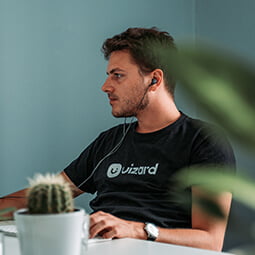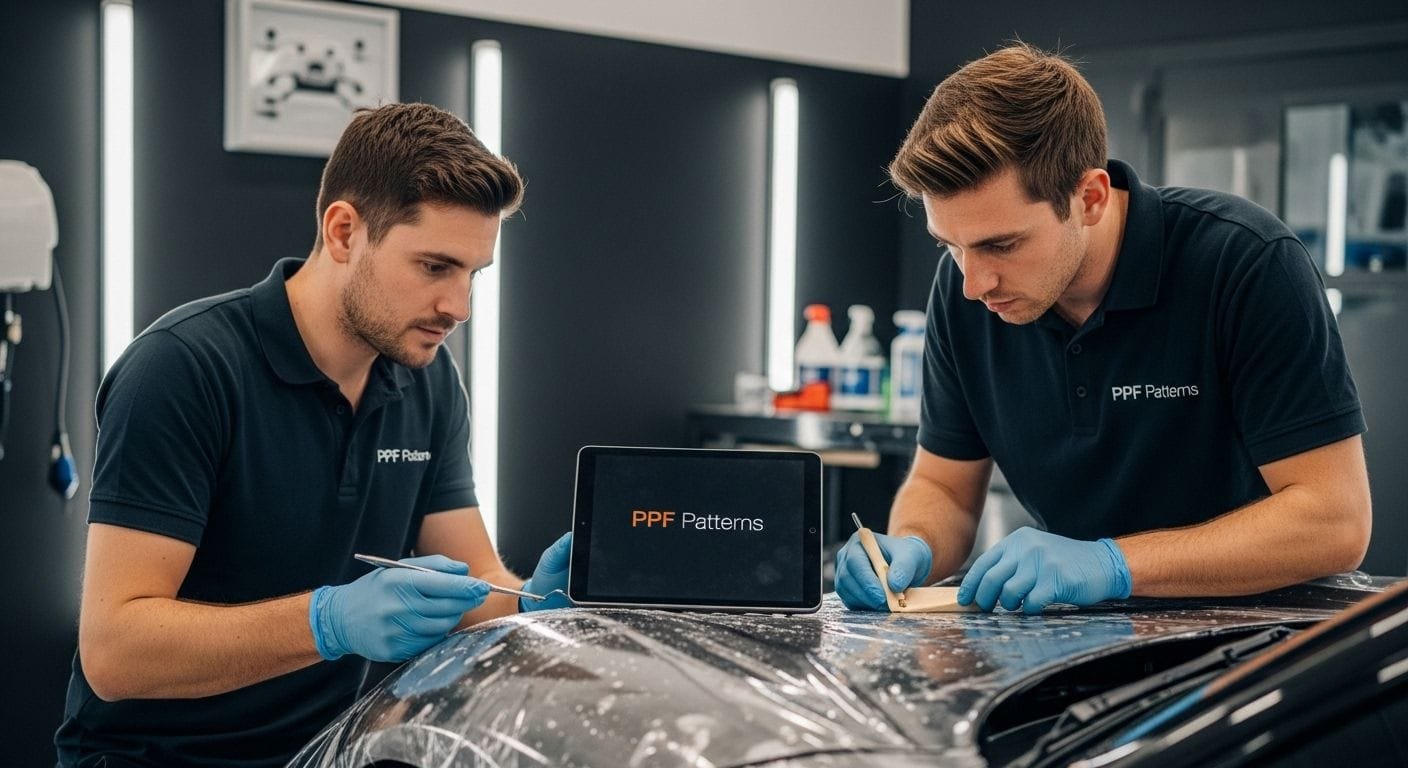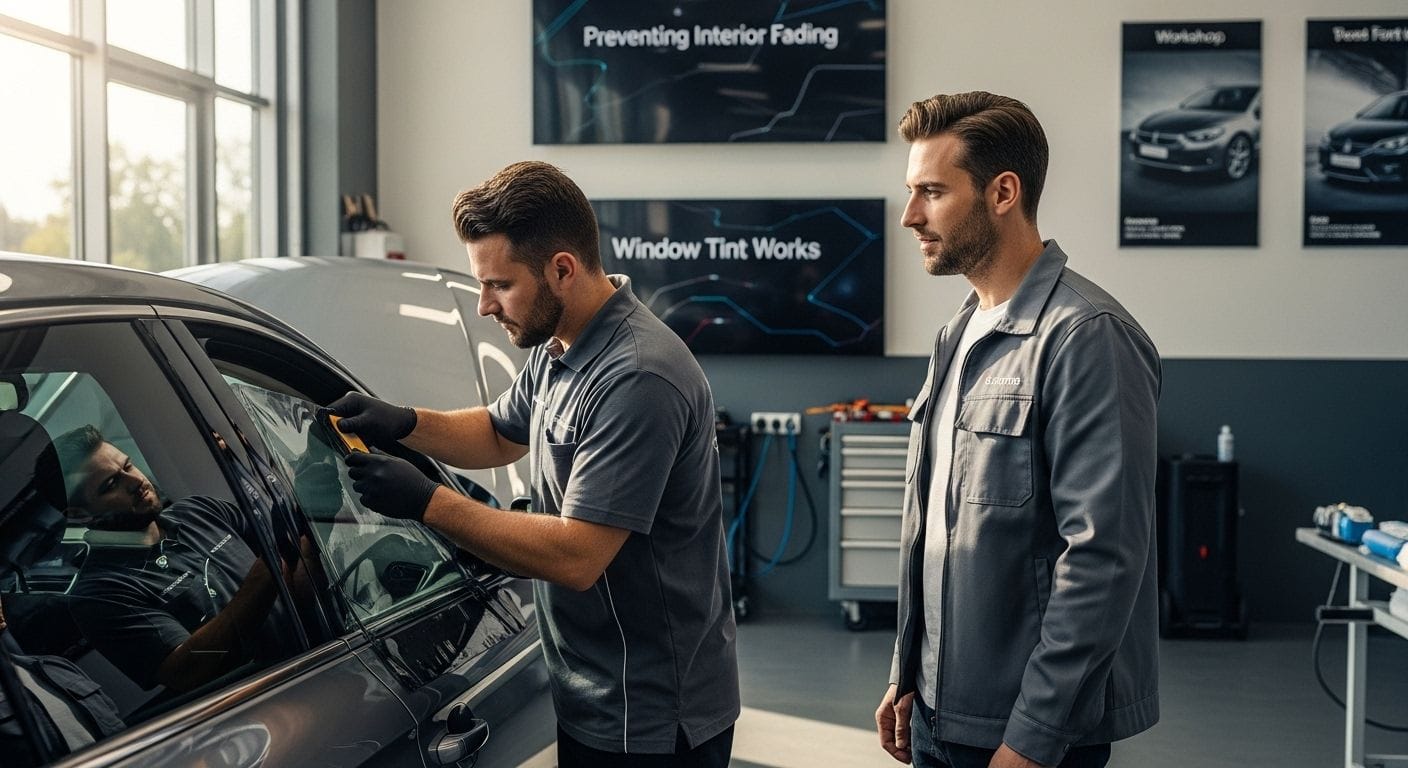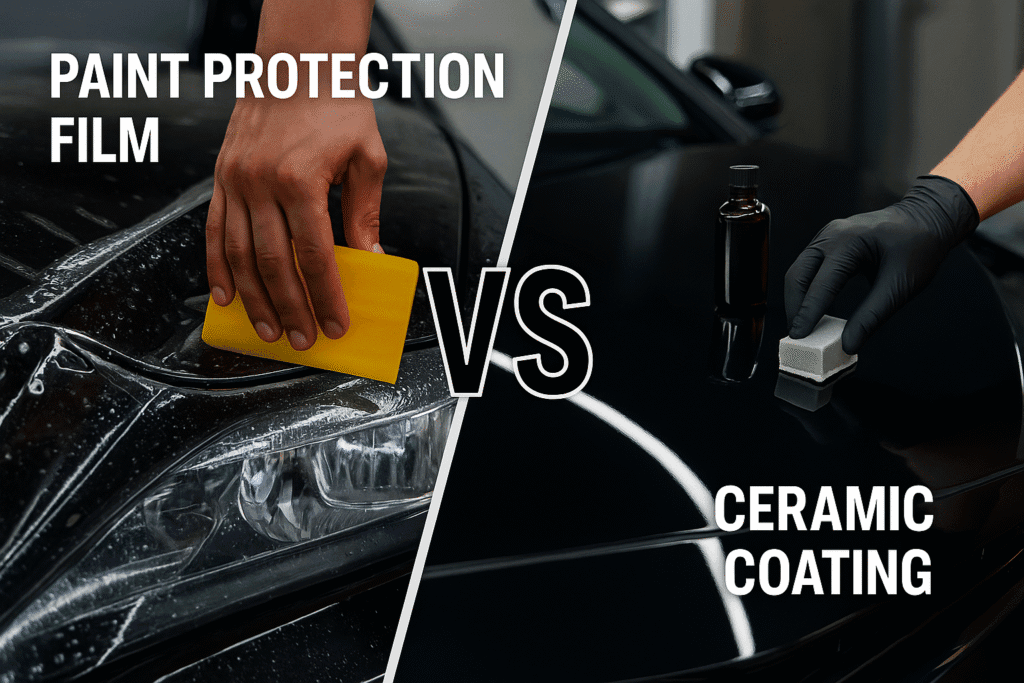
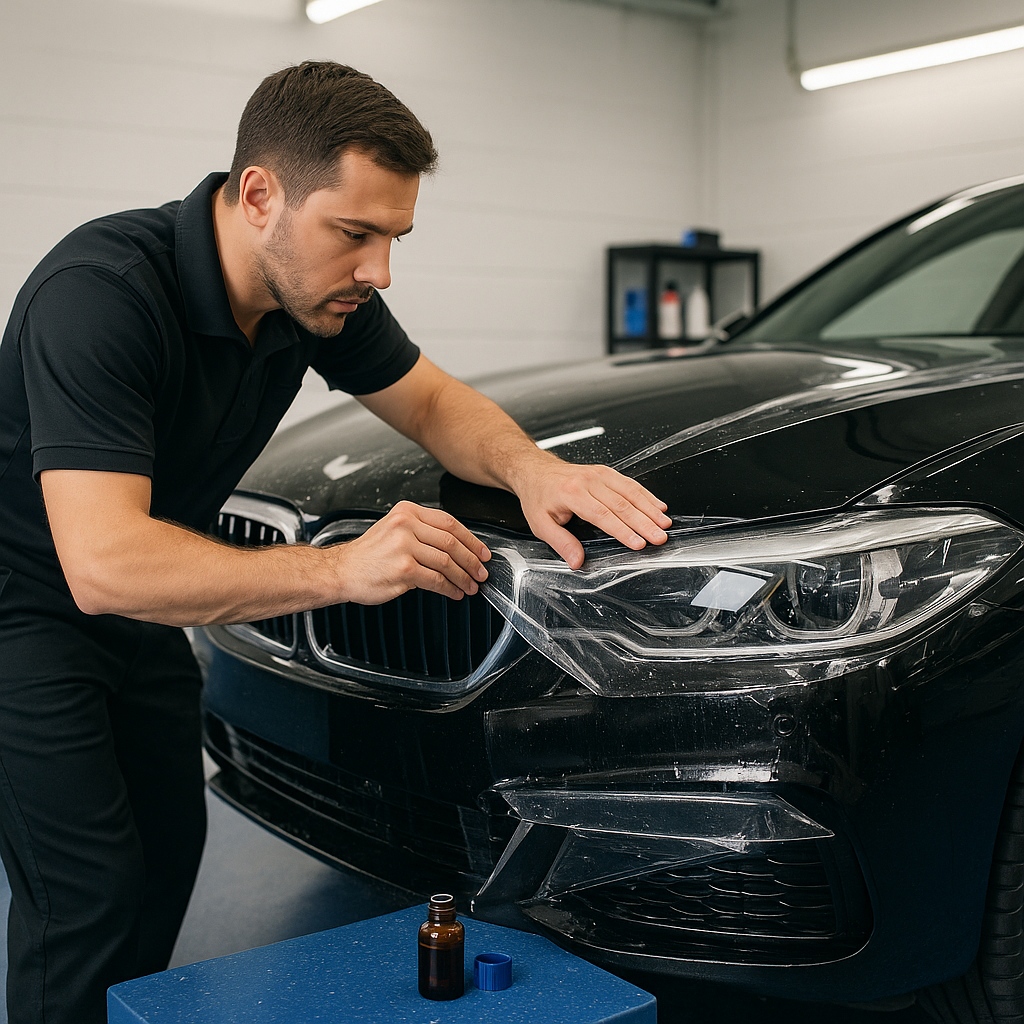
Automotive professionals are debating which surface protection delivers the edge in 2025. Paint Protection Film blocks chips and scratches, while ceramic coatings make cars gleam and shrug off grime. But one detail stuns many experts. Combine both and you unlock the ultimate protection, and PPF can last up to 10 years while ceramic coatings usually top out at 5 years. The biggest advantage might come when these rivals team up rather than battle it out.
Table of Contents
- Understanding Ppf And Ceramic Coating Advantages
- Installation Process And Maintenance Comparison
- Cost, Durability And Long-Term Value
- Choosing The Right Solution For Your Business
Quick Summary
| Takeaway | Explanation |
|---|---|
| PPF offers superior physical protection. | PPF acts as a strong shield against stone chips and abrasions, ideal for high-impact areas of vehicles. |
| Ceramic coatings enhance aesthetic appeal. | These coatings provide a glossy finish and chemical resistance, simplifying cleaning and protecting against UV rays. |
| Maintenance differs significantly between both. | PPF typically requires less upkeep, while ceramic coatings need regular care to maintain their properties and longevity. |
| Cost varies; PPF generally more expensive. | Installation costs differ, with PPF typically ranging from £2,000 to £5,000 compared to ceramic coatings at £1,000 to £2,500. |
| Combining both technologies maximizes protection. | Using PPF in conjunction with ceramic coatings offers comprehensive protection, enhancing both durability and aesthetic appeal for clients. |

Understanding PPF and Ceramic Coating Advantages
In the world of automotive protection, professional installers face critical decisions about safeguarding vehicle surfaces. Paint Protection Film (PPF) and ceramic coatings represent two powerful yet distinctly different approaches to preserving a vehicle’s aesthetic and structural integrity.
The Science Behind Surface Protection
Paint Protection Film (PPF) is a sophisticated thermoplastic urethane film engineered to provide comprehensive physical protection for automotive surfaces. Research from automotive protection specialists reveals that PPF is OEM approved and typically applied to high-impact areas like hoods, front fenders, and side mirrors. The film acts as a robust physical barrier against stone chips, bug splatters, and minor abrasions that can compromise a vehicle’s paintwork.
Ceramic coatings, by contrast, offer a molecular-level protective layer that enhances a vehicle’s visual appearance while providing chemical resistance. Automotive surface protection experts note that ceramic coatings deliver exceptional hydrophobic properties, creating a water-repellent surface that simplifies cleaning and reduces paint oxidation.
Comparative Protection Strategies
The key distinction between PPF and ceramic coatings lies in their primary protective mechanisms. PPF functions as a physical shield, absorbing and dispersing potential impact energy that could damage the underlying paint. Its self-healing properties allow minor scratches to disappear under heat, maintaining the vehicle’s pristine appearance.
Ceramic coatings excel in chemical and UV protection, creating a semi-permanent bond with the vehicle’s paint that resists environmental contaminants. While they cannot prevent physical impacts like PPF, they provide a glossy, long-lasting finish that maintains the vehicle’s shine and protects against chemical staining.
Professional installers must understand that these technologies are not mutually exclusive. Many advanced protection strategies involve combining PPF for physical protection in high-impact areas with ceramic coatings for overall surface enhancement. This hybrid approach maximizes both physical durability and aesthetic refinement, offering clients comprehensive vehicle protection.
Ultimately, the choice between PPF and ceramic coating depends on specific client needs, vehicle usage, and environmental conditions. Professional installers must assess factors like driving environment, vehicle type, and client expectations to recommend the most suitable protection strategy.
To help visualise the differences and strengths of PPF and ceramic coatings, the following comparison table summarises their core features and protective benefits:
| Feature / Benefit | Paint Protection Film (PPF) | Ceramic Coating |
|---|---|---|
| Type of Protection | Physical barrier | Chemical barrier |
| Protection Against | Stone chips, scratches, abrasion | UV, chemicals, water, dirt |
| Self-healing Properties | Yes (minor scratches) | No |
| Enhancement of Appearance | Minimal (clear finish) | High gloss, shine |
| Hydrophobic Effect | No | Yes |
| Typical Longevity | 7–10 years | 2–5 years |
| Maintenance Required | Low | Moderate to high |
| Cost (Install Range) | £2,000–£10,000 (or $2,000–$12,000) | £1,000–£2,500 ($1,000–$2,500) |
Installation Process and Maintenance Comparison
For automotive professionals, understanding the nuanced installation processes and maintenance requirements of PPF and ceramic coatings is crucial for delivering superior vehicle protection services. Each technique demands specific skills, tools, and ongoing care strategies.
Professional Installation Techniques
Research published in MATEC Web of Conferences emphasizes that professional application of protective films is essential to ensure optimal protection against external factors. PPF installation requires meticulous precision, involving carefully measured and custom-cut film panels that must be applied without air bubbles or imperfections.
Ceramic coating application demands an equally rigorous approach. Before application, the vehicle surface requires extensive preparation, including thorough decontamination, paint correction, and a multi-stage polishing process to create an immaculate base. Professional installers must ensure the surface is completely free of imperfections to guarantee proper ceramic coating adhesion.
Maintenance and Longevity Considerations
According to automotive protection documentation, PPF typically requires minimal maintenance beyond regular washing and occasional professional inspection. Most high-quality PPF films offer self-healing properties that can repair minor scratches through heat exposure, reducing long-term maintenance demands.
Ceramic coatings, while providing excellent protection, necessitate more specific maintenance protocols. Professionals recommend using pH-neutral car shampoos, avoiding automated car washes with harsh brushes, and performing periodic maintenance treatments to preserve the coating’s hydrophobic properties. Unlike PPF, ceramic coatings can degrade if not properly maintained, potentially requiring reapplication every two to three years.
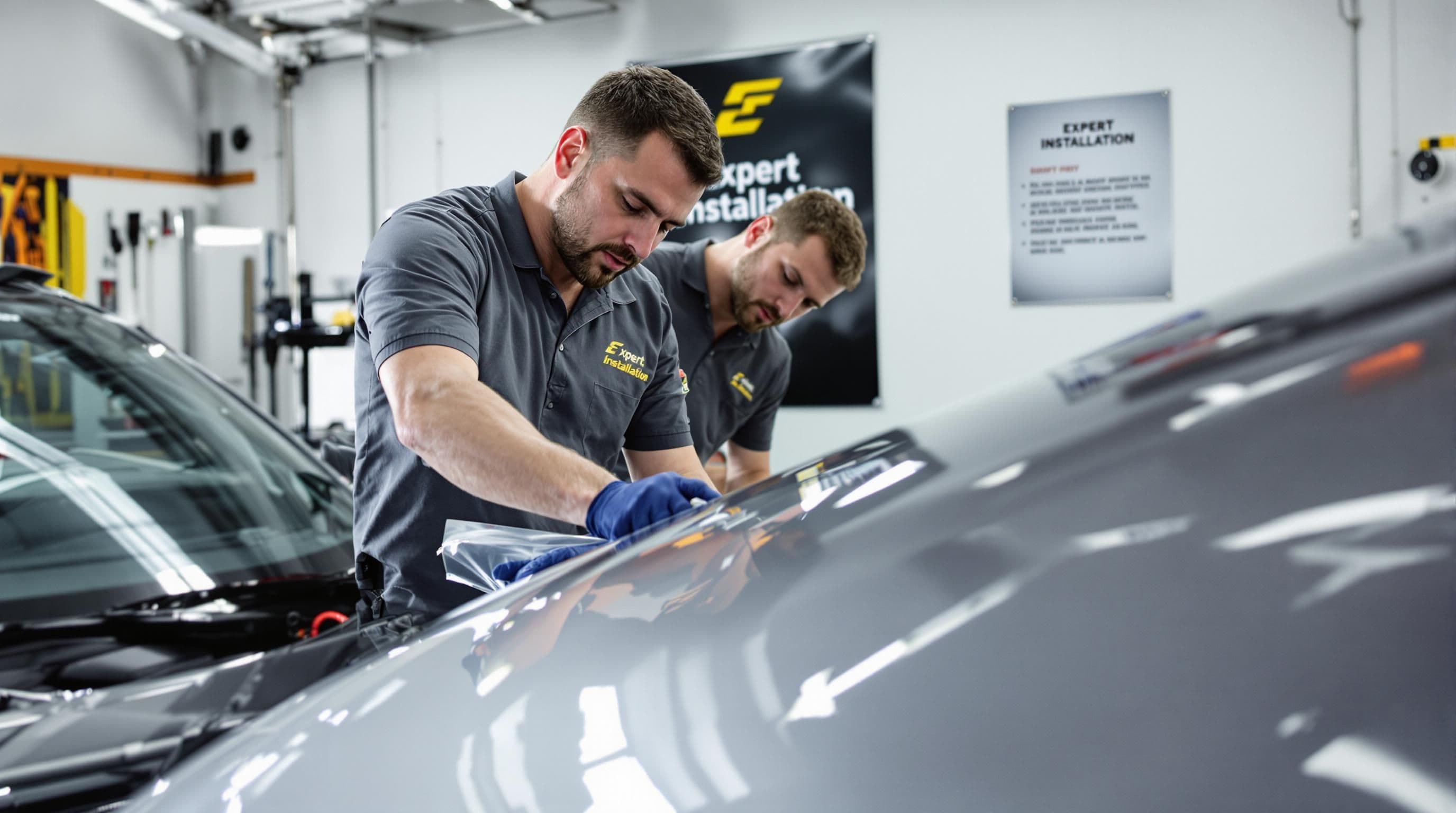
Professional installers must educate clients about these maintenance differences. While PPF offers more robust physical protection with relatively low maintenance, ceramic coatings provide superior aesthetic enhancement but demand more consistent care. The choice between the two depends on the client’s specific needs, driving conditions, and willingness to invest in ongoing vehicle care.
Ultimately, successful installation and maintenance of either PPF or ceramic coating rely on the installer’s expertise, quality of materials, and commitment to precision. Automotive professionals who understand these nuanced differences can provide tailored solutions that maximize vehicle protection and client satisfaction.
Below is a summary table outlining differences in installation steps and typical maintenance tasks for PPF and ceramic coatings:
| Step / Task | PPF | Ceramic Coating |
|---|---|---|
| Surface Preparation | Basic cleaning, decontam. | Deep cleaning, decontam., correction |
| Application Skill | High (film handling) | High (precise coating application) |
| Time to Apply | Several hours to 2+ days | Several hours to 1 day |
| Post-Application Care | Avoid washing for 48 hrs | Avoid moisture for 12–24 hrs |
| Ongoing Maintenance | Standard wash, inspect film | pH-neutral wash, avoid brushes |
| Reapplication Interval | 7–10 years | 2–5 years (may require touch-ups) |
Cost, Durability and Long-Term Value
For automotive professionals, understanding the financial implications and long-term performance of PPF and ceramic coatings is crucial in delivering value-driven protection solutions to clients. The investment in vehicle surface protection goes far beyond initial application costs.
Investment and Pricing Considerations
Market research from automotive protection specialists reveals significant price variations between PPF and ceramic coating installations. Professional ceramic coating applications typically range between $1,000 and $2,500, while paint protection film installations can cost between $2,000 and $5,000 depending on coverage and vehicle complexity.
According to industry data, PPF installations are generally more complex and require specialized materials, which contributes to their higher pricing. Professional installers might see PPF wrap costs ranging from $1,500 to potentially $7,000 based on vehicle size and specific application areas.
Durability and Performance Lifespan
The longevity of protective treatments significantly impacts their overall value proposition. Research indicates that high-quality PPF products can maintain effectiveness for 7 to 10 years when professionally applied and regularly maintained. Ceramic coatings, by comparison, typically offer protection for 2 to 5 years, with advanced formulations potentially extending protection up to 5 years.
Professional installers must communicate these durability differences to clients. While ceramic coatings provide excellent aesthetic enhancement and chemical resistance, PPF offers more robust physical protection over a longer period. The choice depends on the client’s specific needs, driving conditions, and budget constraints.
Ultimately, the long-term value of either protection method depends on professional application quality, maintenance practices, and the specific environmental challenges the vehicle encounters. Automotive professionals who can articulate these nuanced differences will be better positioned to recommend the most appropriate solution for each client’s unique requirements.
By understanding the comprehensive cost-benefit analysis of PPF versus ceramic coating, installers can guide clients toward protection strategies that balance immediate investment with sustained vehicle aesthetic and structural preservation.
Choosing the Right Solution for Your Business
For automotive professionals seeking to expand their service offerings, selecting between PPF and ceramic coating requires strategic consideration of market dynamics, customer demands, and business profitability.
Market Positioning and Service Diversification
Research from automotive industry experts reveals that adding ceramic coatings and paint protection film to service portfolios can significantly enhance dealership profitability and customer satisfaction. These protective technologies offer distinct advantages that appeal to different customer segments.
Ceramic coatings provide a liquid polymer solution that chemically bonds with vehicle paint, creating a durable hydrophobic layer protecting against environmental contaminants and UV rays. Paint Protection Film offers more comprehensive physical damage prevention, allowing for customizable coverage across high-impact vehicle areas like hoods, fenders, mirrors, and bumpers.
Regional Market Considerations
According to regional market research, geographical factors play a crucial role in determining protective film demand. Southern states like Texas, Florida, Georgia, and Tennessee represent leading markets for automotive protection films. These regions experience intense sun exposure, high humidity, and environmental challenges that drive consistent demand for advanced surface protection solutions.
Businesses in areas with harsh environmental conditions should consider positioning themselves as specialists in comprehensive vehicle protection. The strong presence of pickup trucks, commercial vehicles, and performance automotive communities in these regions creates substantial opportunities for PPF and ceramic coating services.
Technological Innovation and Business Strategy
Advanced material science research indicates emerging technologies are transforming the automotive protection landscape. Innovations like self-healing polymer coatings and nano-ceramic technologies with 9H hardness ratings are creating premium market segments. Professional installers who stay ahead of these technological developments can differentiate their businesses and attract high-end clientele.
Successful businesses will approach PPF and ceramic coating not as competing technologies, but as complementary solutions. By offering flexible, tailored protection packages that combine both technologies strategically, automotive professionals can meet diverse customer needs while maximizing revenue potential.
Ultimately, choosing the right solution requires a holistic approach. Consider your local market conditions, target customer base, technological capabilities, and long-term business growth strategy. Automotive professionals who combine technical expertise with strategic market positioning will be best equipped to thrive in the evolving vehicle protection industry.
Frequently Asked Questions
What is the difference between Paint Protection Film (PPF) and ceramic coatings?
Paint Protection Film (PPF) acts as a physical barrier against chips, scratches, and abrasions, while ceramic coatings provide a chemical protective layer that enhances shine and offers UV protection.
How long do PPF and ceramic coatings typically last?
PPF can last between 7 to 10 years with proper maintenance, while ceramic coatings generally last 2 to 5 years, depending on the formulation and care given.
Which option is more cost-effective for automotive professionals?
While PPF installations are typically more expensive, ranging from £2,000 to £5,000, they provide superior long-term protection. Ceramic coatings are more affordable, ranging from £1,000 to £2,500, focusing on aesthetic enhancement.
Can PPF and ceramic coatings be used together?
Yes, using PPF in conjunction with ceramic coatings can provide optimal protection. The combination enhances both physical durability and visual appeal, making it a preferred choice for many automotive professionals.
Cut Down on PPF Installation Hassles and Boost Your Shop’s Efficiency
Every professional installer knows the challenge: The best protection means nothing if your patterns are off or material is wasted. Whether you’re leaning towards PPF, ceramic coating, or the unbeatable combo, precise application is the foundation of a flawless result and repeat business. It is not just about choosing between physical barriers or glossy finishes. It is about how seamlessly you can deliver what your customers expect, while keeping costs low and results exceptional.

Ready to eliminate guesswork and minimise material waste on every PPF job? The AEONCUT software gives you access to an extensive pattern library and AI-driven cutting tools. Join the experts who rely on AEONCUT for precision, efficiency, and clear competitive advantage. Visit aeoncutsw.com today and discover how your shop can protect more vehicles, save time, and maximise profits. Try a subscription plan now and set the new standard in automotive surface protection.
